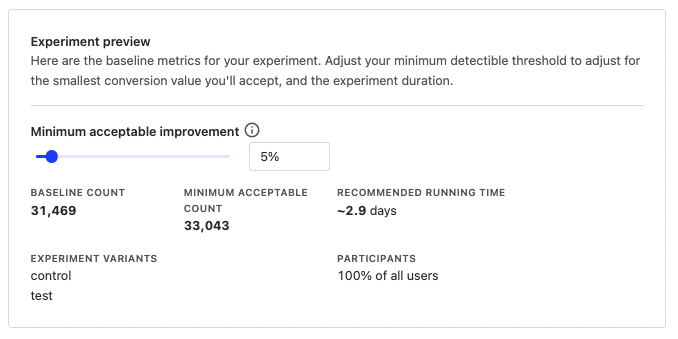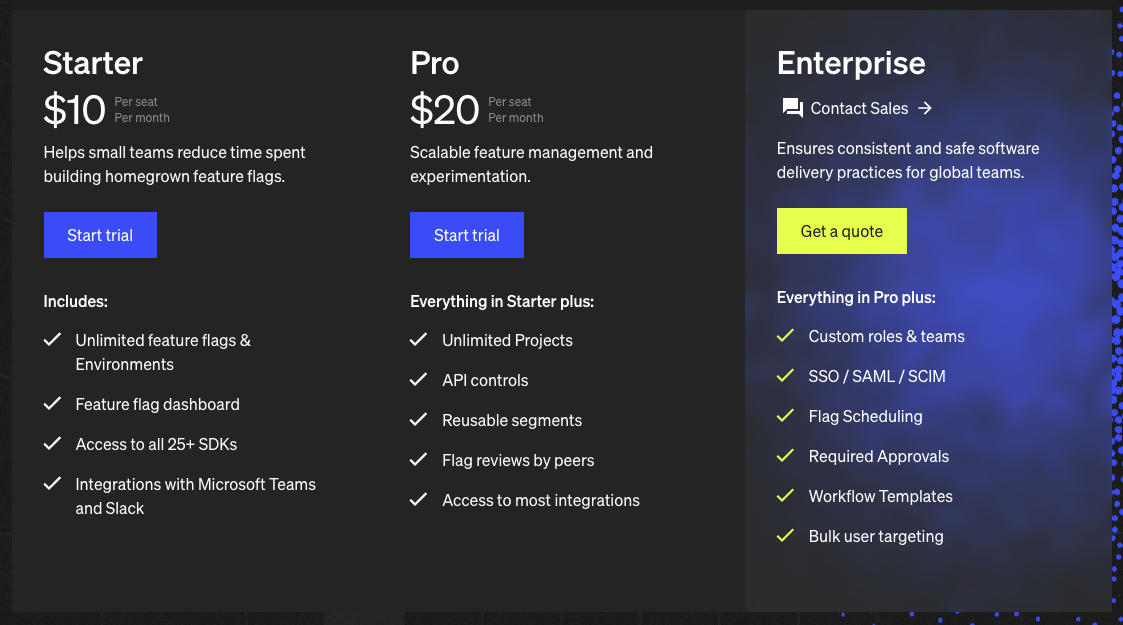
In-depth: PostHog vs LaunchDarkly
Contents
PostHog and LaunchDarkly both help you de-risk releases, increase engineering velocity, configure your app remotely, customize experiences, and more.
But how are they different? If you remember nothing else, remember these two points:
LaunchDarkly only does feature flags and experiments.
PostHog is an all-in-one platform that does flags, experiments and a whole bunch more.
In this post, we'll cover these differences in more detail, comparing features, pricing, reporting, integrations, and frequently asked questions about both.
How is PostHog different?
1. It's an all-in-one platform
Seamless integration between flags, experiments and other tools, such as product analytics, session replays, and surveys, unlocks a deeper layer of analysis and simplifies your data stack. This means you can spend less time engineering your data and more time making better decisions about what you've shipped, and what to build next.
2. We’re transparent and open source
Our code, culture, and strategy are public on GitHub and in our public handbook. We're also self-serve. No need to "talk to sales" or "schedule a demo" unless you want to – we're always happy to chat. Our pricing is transparent, too – no opaque add-ons or surprise extras here.
3. Built for startups and engineers
PostHog is built for high-growth startups. It's simple to implement – we have many SDKs, tutorials, and docs to help you get started quickly with any type of app – and will grow with you as you scale. When you need advanced product analytics such as a CDP or data warehouse, you can just turn those features on. LaunchDarkly focuses on enterprise users, managers, and DevOps. This means more focus on governance and integrations.
Comparing PostHog and LaunchDarkly
Platform
Both tools offer everything you need to use flags and experiments effectivelym but PostHog offers a wider range of tools with greater transparency in all aspects.
Feature management
Both PostHog and LaunchDarkly offer all the functionality you expect for feature management using feature flags.
LaunchDarkly’s enterprise plan unlocks advanced workflow features like scheduling, lifecycle management, triggers, and more. PostHog’s API enables you to mimic this functionality if needed, but it isn’t built into the UI yet.
Experimentation
PostHog and LaunchDarkly have relatively similar experimentation feature sets, enabling you to run A/B/n tests with custom goals and calculate if they have a statistically significant impact.
PostHog automatically calculates a recommended run time based on past data and minimally acceptable improvements. This helps you avoid the peeking problem and end your experiment at the right time.

Pricing
PostHog and LaunchDarkly take opposing approaches.
PostHog’s feature flag pricing is pay-per-request (and A/B tests use feature flags). There is a generous free tier of 1M requests per month with all features, add-ons, and integrations available.

LaunchDarkly’s pricing is more complicated. It charges by seat starting at $10/seat/month. On top of this, it charges based on "monthly context instances" (MCIs) also known as monthly active users. The pro plan only gets 1,000 frontend MCIs per month. You must upgrade to the $20/seat/month to more than 1,000 MCIs, then pay more beyond 10,000.

As mentioned earlier, many of the security, approval, and workflow features that differentiate them are only available at the opaque "Enterprise" level.
Example scenarios
To give you an idea of what pricing looks like in reality, here are some example situations and their estimated costs for both PostHog and LaunchDarkly.
| Seats | MAUs | Requests | Request location | PostHog cost | LaunchDarkly cost |
| 5 | 5,000 | 1,000,000 | Backend | $0 | $100 |
| 10 | 15,000 | 1,000,000 | Frontend | $0 | $200 + cost of 5000 MAUs |
| 20 | 25,000 | 5,000,000 | Backend | $400 | $400 |
| 30 | 50,000 | 15,000,000 | Frontend | $1,400 | ??? (Enterprise) |
Notes:
- Using backend local evaluation in PostHog lowers the amount of flag usage to depend on the polling duration and active number of servers. If you use flags with one server polling every 30 seconds, this amount is under 1M requests (meaning free).
- PostHog has volume discounts on flags over 2 million requests per month.
Reporting and analytics
Although LaunchDarkly has basic reporting features, PostHog has a more expansive analytics suite. Visualizations, funnels, retention, SQL querying, and session replays are all integrated with flags and A/B testing data. This enables you to do deeper analysis of their impact and combine them with other product and usage data.
Integrations
Both PostHog and LaunchDarkly have a range of integrations that enable them to import, export, enhance, and make use of data.
LaunchDarkly has more pre-built integrations, but some are only available on higher paid plans, and others replicate functionality built-in to PostHog as standard. These include environments as a service, observability tools, workflow management, and more.
PostHog’s event-based structure enables you to import data from anywhere for use with flags and experiments. The free API enables you to connect, edit, and capture from anywhere, too.
PostHog’s data warehouse is in private beta and will soon make outside data available for use in PostHog.
Security and compliance
Both PostHog and LaunchDarkly enable companies to remain secure and compliant with privacy regulations. Companies can customize the levels of user privacy related to these platforms to their needs.
Many of LaunchDarkly’s advanced compliance tools are only available on its enterprise plans. PostHog also features SSO and SAML in its enterprise edition.
Frequently asked questions
Who uses PostHog?
PostHog is built for startups and their engineers. It provides all the tools startups need to build successful products. The people who find PostHog most useful are founders, product engineers, and growth engineers. Companies that use PostHog feature flags and experiments include Y Combinator, Vendasta, and AssemblyAI.
How much does PostHog cost?
Feature flags and experiments are free for up to 1M requests per month. Beyond that, it costs $0.0001/request (or $1 per 10,000 requests). There are discounts for high-volume users, non-profits, and startups. Other products, like product analytics and session replay, have separate but similarly structured pricing.
How much does LaunchDarkly cost?
LaunchDarkly starts at $10 per seat per month. This includes unlimited flags, server-side monthly active users, and 1,000 client-side monthly active users. More client-side monthly active users, also known as monthly context instances, cost more.
Their pro plan doubles the cost to $20 per seat per month. It adds API, unlimited projects, and more integrations. Above that, their enterprise plan requires talking to sales. It includes custom roles, SSO, scheduling, workflows, and more.
Can I migrate from LaunchDarkly?
Yes. See our LaunchDarkly to PostHog migration guide for more.
Does LaunchDarkly or PostHog offer free trials?
LaunchDarkly offers a 14-day free trial, but beyond that, all access and features are paid.
PostHog lets you use all its features for free. Once you upgrade to paid, you get 1M flag requests, 1M events, and 5,000 recordings for free each month. This means if you stay below this, PostHog remains free.
How long does it take to implement PostHog?
Feature flags and experiments are simple. They are a few lines of code in all of your favorite languages. They can even be set up on no-code site builders like Framer or Webflow.
The process requires signing up for PostHog, installing the snippet or SDK in your app, creating the flag in PostHog, and implementing the flag evaluation and relevant logic in your app. In many of the SDKs, we handle important aspects like local evaluation and event capture for you.
Much of the PostHog implementation, like user identification, is reused across products. Because PostHog is an all-in-one platform, analytics capture for targeting and A/B testing doesn’t need setup or connection either.









